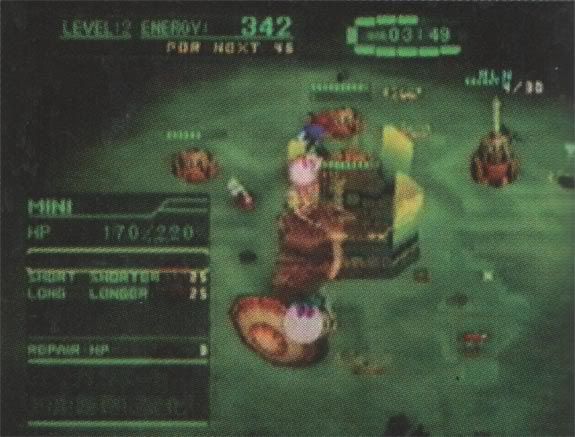
The Beta Quests are events and scenarios not seen in the game, but that can be reached with Action replay/Game Shark codes. There is an incredible number of variants in the beta quests, and probably no one has really seen them all, so we can only wonder if there is still more stuff left in the cartridge. Some of these Beta Quest scenes are situations connected with the new features that would have been in Zelda URA, while in others it’s still possible to see some of the items cut in the transposition from disk to cartridge, or particulary situations that were changed a bit in the final version. Certainly a precious source of information of beta Zelda.
As Linkx111 has pointed out, this particular mode simply removes the pointers that would connect an area on the game map to another one. Zelda’s game areas are indeed listed inside a buffer, which contains all the areas inside of blocks. Removing the pointers permits the player to travel randomly from a map to another, eventually landing inside particular blocks which has no pointers and contains traces of old beta items, or permitting to explore the cutscene like we would be normally playing in the game. Many of the items could look like betas but are indeed just a messed up version of the normal game, due to the missing pointers but other items and scenes, not included in the final game, can be accessed via this method.
Also thanks to ZethN64 for pointing this out recently. To correct the previous statment, the beta quest code loads up specific scenes within a map without the cutscene trigger event activated. These cutscenes load up different object sets(NPC and object placement within a map) depending on the last value you use on the beta quest code.(BETACODE 000X) These scenes also contain old exit data within the map that do not always point correctly to the right exit due to the game being compiled and exit table being shifted so many times. Developers saw no reason to fix these exits since they were meant for cutscenes only and the player wouldn’t walk through these exits. These scene’s objects sets however do contain during the time of their creation object placement, aka beta actor/object placement. It gives us a glimpse of what the prerelease/ura Zelda would of been like with these object set placements and how much it differs from the final game.
![]() [spoiler /Clicca qui per la versione in Italiano/ /Nascondi la versione in Italiano/]Più che un gioco a sè, le Beta Quest sono delle situazioni e scenari inediti che è possibile sbloccare in Ocarina Of Time grazie a dei codici per Action Replay / Game Shark. Esistono moltissime varianti delle Beta Quest in base al codice inserito e probabilmente ancora nessuno è riuscito ad esplorarle realmente tutte, non possiamo quindi ancora ben sapere quali meraviglie sono nascoste all’interno della rom. Alcune di queste sono riconducibili a collegamenti che si sarebbero sbloccati una volta unito Ocarina a URA tramite 64DD, mentre in altre è possibile vedere oggetti che sono stati tagliati quando fu spostato su cartuccia oppure situazioni non definitive di scene poi cambiate nel gioco completo. Senza dubbio una delle cose più interessanti per cui vale la pena usare un GameShark e preziosa fonte di informazione sui tagli di Ocarina.[/spoiler]
[spoiler /Clicca qui per la versione in Italiano/ /Nascondi la versione in Italiano/]Più che un gioco a sè, le Beta Quest sono delle situazioni e scenari inediti che è possibile sbloccare in Ocarina Of Time grazie a dei codici per Action Replay / Game Shark. Esistono moltissime varianti delle Beta Quest in base al codice inserito e probabilmente ancora nessuno è riuscito ad esplorarle realmente tutte, non possiamo quindi ancora ben sapere quali meraviglie sono nascoste all’interno della rom. Alcune di queste sono riconducibili a collegamenti che si sarebbero sbloccati una volta unito Ocarina a URA tramite 64DD, mentre in altre è possibile vedere oggetti che sono stati tagliati quando fu spostato su cartuccia oppure situazioni non definitive di scene poi cambiate nel gioco completo. Senza dubbio una delle cose più interessanti per cui vale la pena usare un GameShark e preziosa fonte di informazione sui tagli di Ocarina.[/spoiler]
Images:




